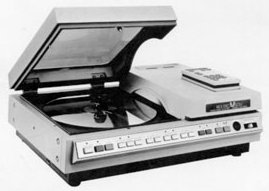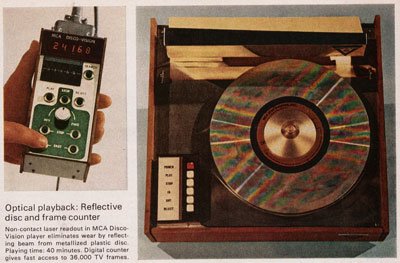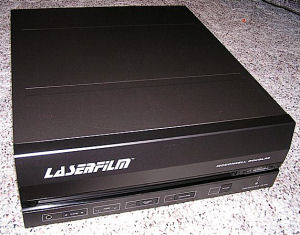The machines sold out in under an hour, in near-riot conditions, and many of the customers who couldn't get a
machine bought up the remaining discs so that they would have something to play when they eventually did get hold of
one...
An early DiscoVision player. This is an "industrial" model, produced for General Motors for training and interactive diagnostic uses |
 |
Philips (and later Pioneer) manufactured the production machines. Curiously, Philips used a different name for the system: VLP for Video Long Player, or occasionally Video Laser
Player. The term DiscoVision is itself somewhat confusing, as it refers to three different things: the company, the label
on which discs were released, and the format. It is also apparently a somewhat variable "standard"; different machines
may play different disks in different ways... The Philips standard specified various codes to control the players, which
are respected by all subsequent players but ignored by DiscoVision era machines.
Another successful trial was made in Seattle a few months later, and the system went on general release in early 1980. Unfortunately, it soon developed a reputation for unreliability. Problems with disc pressing meant that more than half of the early discs were unplayable; in order to improve quality control, the pressing plants ended up having people watching every disc through to check it, which is hardly cost effective!
The machines themselves seemed to be variable, as well - some would play a disc, some wouldn't - and too many ended up going back for repairs.
Reviews at the time seem to agree that the system had the potential to be fantastic, but wasn't living up to this potential. Of course, the companies who had spent nearly a decade pushing money into it were desperate to start getting returns, particularly as video tape was starting to take over the world...
|



